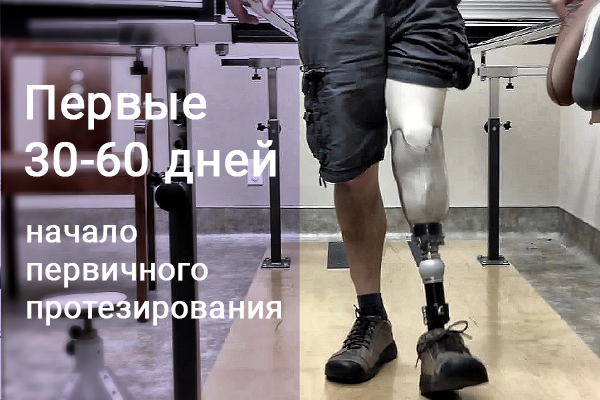Losing a limb brings major changes in your life. Our main goal is to help you maintain or regain your mobility and independence.

- Scoliologic.de
- We will contact you soon
- prosthetic technologies
- Bionic prostheses - innovations from leading manufacturers
- Stages of fitting a leg prosthesis
- More comfort - only with silicone feet!
- Personalized cosmetic disguises
- Technological Developments
- Components for the manufacture of prostheses
- Comfort and secure fit of the prosthesis
- Self-learning technology
- Easy control in motion
- Early prosthetics – the key to success!
- Lower limb prosthesis
- Rehabilitation is an important part of prosthetic work
- Features of the manufacture of prostheses
Scoliologic.de
Comfortable – Thanks to the unique materials, the hip cups are suitable for long daily wear while maintaining the ultimate comfort of the limbs.
Esthetic – The design and the choice of material for the cosmetic acetabular cup are individually developed in consultation with the user.
Functional – Our specialists provide you with the functional parts you need for your prosthesis to meet your mobility and sports needs.
State-of-the-art solutions – A team of doctors and technicians manufacture lower limb prostheses using high-quality, state-of-the-art materials and modules. Manufacturing technologies such as 3D scanning, printing and precision robot turning of prosthetic sleeves are used.
Reliable – All modules and materials used are certified, the prosthesis is subjected to a multi-stage quality control according to European standards.

We will contact you soon
Less restriction of mobility: the user can mobilize for short distances within his house or apartment with the help of additional aids (walker, crutches, etc.) or with the help of an external person. Difficult to put on and check the prosthesis.
Limited mobility in the outside world: The user walks with the prosthesis on a flat surface without assistance in locomotion. Duration and range of movement are moderately restricted. The patient is able to put on the prosthesis independently. Control over the prosthesis is moderate.
Unrestricted mobility in the outside world: the user can use the prosthesis at different speeds and overcome all obstacles without difficulty. He is able to perform significant physical tasks in the home or in industry on his feet. Compared to healthy people, the patient's walking time and range of motion are only slightly restricted.
Unrestricted mobility in the outside world with an increased need for a prosthesis: The patient can move safely with a prosthesis. The duration and extent of movement are not restricted. Excellent control of the prosthesis. Due to the intensive use of the prosthesis and the increased functional requirements, the demands on the design of the prosthesis are increasing (increased reliability of the components and their dynamic activity, secure anchoring of the prosthesis and increased damping functions).
prosthetic technologies

There are two main types of prosthetic arms and legs:
The first ones are just for beauty. They look like a real limb, but the person cannot hold a fork or pen with this artificial new hand.
Modern functional prostheses can be divided into three further subcategories:
The first are designed to perform specific tasks, jobs. These newer prosthetic arms come with special hooks, pliers, clamps, and other interchangeable attachments.
Tension arm prostheses work through special mechanisms - systems of cables, cords, weights and springs. They are controlled by tightening and relaxing muscles. It is important that the prosthesis is fitted immediately after the amputation so that the residual limb retains its sensitivity and the muscles do not atrophy.
The modern bionic construction is a new generation arm prosthesis, which is controlled by transmitting signals from the brain via nerve fibers. Roughly speaking, the human controls the prosthesis through the power of his thoughts. Artificial limbs are also made using this technology. Current images and videos of such models can be used to assess their merits.
Bionic prostheses - innovations from leading manufacturers

Modern bionic prostheses are state-of-the-art models that are individually designed using electronic devices. They are powered by special batteries that need to be recharged at regular intervals. Electrical impulses from the artificial arm or leg are conducted to and from the nerve roots. The movements can be controlled by a signal from the brain.
It is important to learn how to use a modern, new prosthesis correctly, because considerable problems can arise in the initial phase. Patients are not always able to correctly calculate grip strength, stride length, and walking speed. The model is therefore individually adapted to the patient's physiology via an electronic control system.
Modern thigh prostheses and similar supplies are important in the first 60 days after the amputation. This period is referred to as the 'golden window' for adjustment. The psychological state of the patient is important. Amputees often fall into deep depression. Successful learning of the function and adaptation to the new prosthesis depend on the will of the patient.
Stages of fitting a leg prosthesis
The success of the operation to implant a leg prosthesis depends on the sequence of the individual phases. Main stages of work with the patient:
- Discussion with the physiotherapist, orthopedist and orthopedic technician.
- Measurement of height, weight and other parameters.
- Making an impression of the stump.
- Preparation of a trial socket and fitting of the prosthesis to it.
- Instruction of the patient in walking and in the prosthesis for other movements.
- Fabrication of the final shaft.
- Handing over the finished prosthesis to the patient and teaching them how to walk with the prosthesis.
Prosthetics is a lengthy process that requires the active participation of both professionals and patients. A warranty service is offered from the selection of the prosthesis to its issuance and even after.
Anyone can learn to use a prosthesis and lead an active life. You should definitely give yourself this chance!
More comfort - only with silicone feet!
Do you still dream of more comfort when moving? We are pleased to offer you a new product: closed silicone feet…
Every amputee needs support and hope for a 'new life'. Thanks to the prostheses from the Antares Fit online store, patients gain an active life full of daily joy, appreciating every movement of their body. Life's moments are priceless, as are our company's quality products to help you forget about the limitations!
The Antares Fit prosthetic foot shop does not operate on a large scale and does not aim to meet a plan for the number of prosthetic feet sold monthly. We have specialized in custom-made products, which are first tested by the customer and adjusted if necessary.
We offer our customers a number of advantages:
- The use of high-quality materials that ensure a long service life with the same level of comfort in everyday life.
- All products are certified - our prostheses go through a multi-stage quality control system in accordance with European standards.
- Qualified employees - we will advise you on all questions that interest you and help you to choose the right model for your specific case.
- The customer selects the design and material of the cosmetic dentures and the product is designed for the specific user.
- Together with the prosthesis you will receive instructions for use, which describe the care and the rules for use.
All types of prostheses of all levels of difficulty can be ordered in the Antares Fit shop:
- bionic prostheses;
- prosthetic feet;
- hips;
- lower leg;
- bath articles;
- cosmetic prostheses;
- knee modules;
- accessories and more.
We are in constant communication with our customers, provide warranty and post-warranty service, solve problems in service. Call us and order the best prosthesis for a new life!
Personalized cosmetic disguises
Do you lead an active life? Constantly in motion? We offer you the manufacture of a special cosmetic lining that will provide you with comfort and reliable protection for your prosthetic components.
The cosmetic disguise is a geometric copy of the preserved limb that is digitally created. The back of the fairing is quick detachable and attached with magnets so it can be easily removed to charge the knee module.
A knee module cover can be used at the bending point for the C-Leg and Genium knee modules. It protects clothing from being pinched and helps improve the natural and aesthetic appearance of the prosthesis.
Technological Developments
In medical technology, the further development of prosthetics is based on the pursuit of a natural movement pattern. Natural human movement is difficult to simulate, but modern technology in prosthetics makes it possible to replace many important functions: restore mobility, cope with everyday life without help. With a prosthesis, you avoid postural and balance problems that can result from losing weight in the amputated leg.
For maximum safety and comfort, the optimal fit of the residual limb socket is particularly important. It must create a secure connection between the residual limb and the prosthesis. Ottobock offers a wide range of insole materials and adjustment options to offer you maximum comfort in your prosthesis.
The success of a prosthesis depends on a number of factors including functionality, quality of attachment and important factors such as your desire and motivation. In the Ottobock workshop, we take a holistic approach and offer you individual support from all members of the rehabilitation team. Our technical know-how not only includes a comprehensive product portfolio, but also individual product adaptations and a quality assurance system that ensures that you are fully satisfied with the functionality of your prosthesis. In addition to the functionality of your prosthesis, your comfort is also very important to us. Your prosthesis should not only look natural, it should also help you to perform movements that are as harmonious and natural as possible.
Components for the manufacture of prostheses
Each amputation case is unique and the accessories used to make prosthetic arms and legs have different needs. We offer a wide range of accessories to find the right solution for every prosthesis case.

Upper limb prostheses must be multifunctional, reliable and meet the individual needs of the user.

Explore the wide range of components, materials and technologies available for lower limb prostheses to meet the different activity levels and needs of users.
Comfort and secure fit of the prosthesis
Different residual limb shapes and activity levels result in different stresses on the residual limb. Movements in the socket of the residual limb during active use of the prosthesis can damage the residual limb. Liners are used to create a secure connection between the residual limb and the prosthesis.

With the right type of liner, you can significantly increase your walking comfort.
Self-learning technology
VONE uses microprocessor technology capable of analyzing large amounts of data and sensor signals hundreds of times per second. Self-learning combined with an optimized knee design (both in swing and stance phase) ensures that the knee functions naturally and continuously adapts to the needs of the user
Easy control in motion
We've made VONE modes faster and easier to control.
With the easy-to-use automatic control interface, you can adjust the limb in fewer steps while still having access to advanced and more precise adjustments if needed.
Early prosthetics – the key to success!
After the operation, you should start with the prosthetics within the first 30-60 days!
This avoids the formation of contractures and muscle atony of the residual limb. The risk of aggravation of the chronic disease is drastically reduced and a positive emotional attitude towards further rehabilitation is created.
Prolonging this process can limit future use of the prosthesis.



Lower limb prosthesis
This is the initial phase of prosthesis fitting. The therapeutic basic prosthesis is a training prosthesis for the patient. Their purpose is to properly shape the residual limb and help the patient learn to move on the prosthesis.
The modular prosthesis is the standard in modern prosthetics. A leg prosthesis composed of different modules helps to replace the function of the lost limb as much as possible. The modules used can be mechanical or microprocessor controlled and can be controlled pneumatically, hydraulically or mechanically. The combination of modules in the prosthesis allows the patient to move around easily and maintain stability.
The earlier a child gets a prosthesis, the easier it will be to learn to take control. Children's prostheses have their own characteristics and difficulties. Children outgrow their dentures very quickly, so they need to be replaced twice a year.
These prostheses are specially designed for bathing. All modules are protected against the ingress of water with special wick elements, so that water treatment is possible.
Sports prostheses are made for people who want to maintain an active lifestyle and continue to play sports.
These prostheses are made of highly resistant materials derived from space technology and the latest findings in neuroscience and biomechanics.
They are the most technologically advanced and expensive type of prosthesis. Their functionality is ensured by a processor that stabilizes the patient's gait, allowing him to quickly accelerate from step to run, overcoming obstacles. This type of prosthesis is programmed individually for the patient. The external power supply itself needs regular charging and the modules need regular maintenance.
Rehabilitation is an important part of prosthetic work
Everyone has to deal with the time after the operation in their own way. After the amputation of a limb, the question arises of how to get back to the old way of life. You also have to learn how to take care of the postoperative sutures and stumps and how to gradually bring the joints back to normal range of motion. In order to prevent swelling of the residual limb during rehabilitation and to care for it yourself after the wound has healed, you need to learn the following
- massage techniques;
- how to properly put on an elastic bandage;
- Perform a series of appropriate exercises;
- train the joints and give them flexibility.
All of these treatments can only be done when the wounds are fully healed and there is no pain. For this reason, each patient is accompanied by an experienced prosthodontist until complete rehabilitation. He also takes care of the psychological preparation of the patient and accompanies him through all the phases of the restoration, from taking the impression to the full functioning of the prosthesis.
Features of the manufacture of prostheses
The company successfully cooperates with the state. Each patient receives a 100%ige compensation for the cost of prosthesis and rehabilitation according to the target program of the Ministry of Labor and Social Security. Since the prostheses vary in price, the individual approach plays an important role. The cost of prostheses is influenced by:
- Individual physical characteristics of the person (age, weight, height);
- medical considerations (degree of amputation, patient condition, stump photos);
- the patient's wishes.
All of these factors will be clarified after a personal consultation with the doctor.
Free prostheses are only available if there is an agreement between the company and the authorities of your place of residence. Prostheses can also be made for cash and with further financial compensation from the state.
Only high-strength metal compounds, high-quality polymer composites and hypoallergenic thermoplastic materials are used for all types of prostheses.
- prosthetic legs.
- prosthetic leg where.
- Leg prosthesis below the knee.
- prosthetic foot.
- cost of the prosthetic leg.
- blunt.
- acetabulum.
- Modern leg prostheses.
